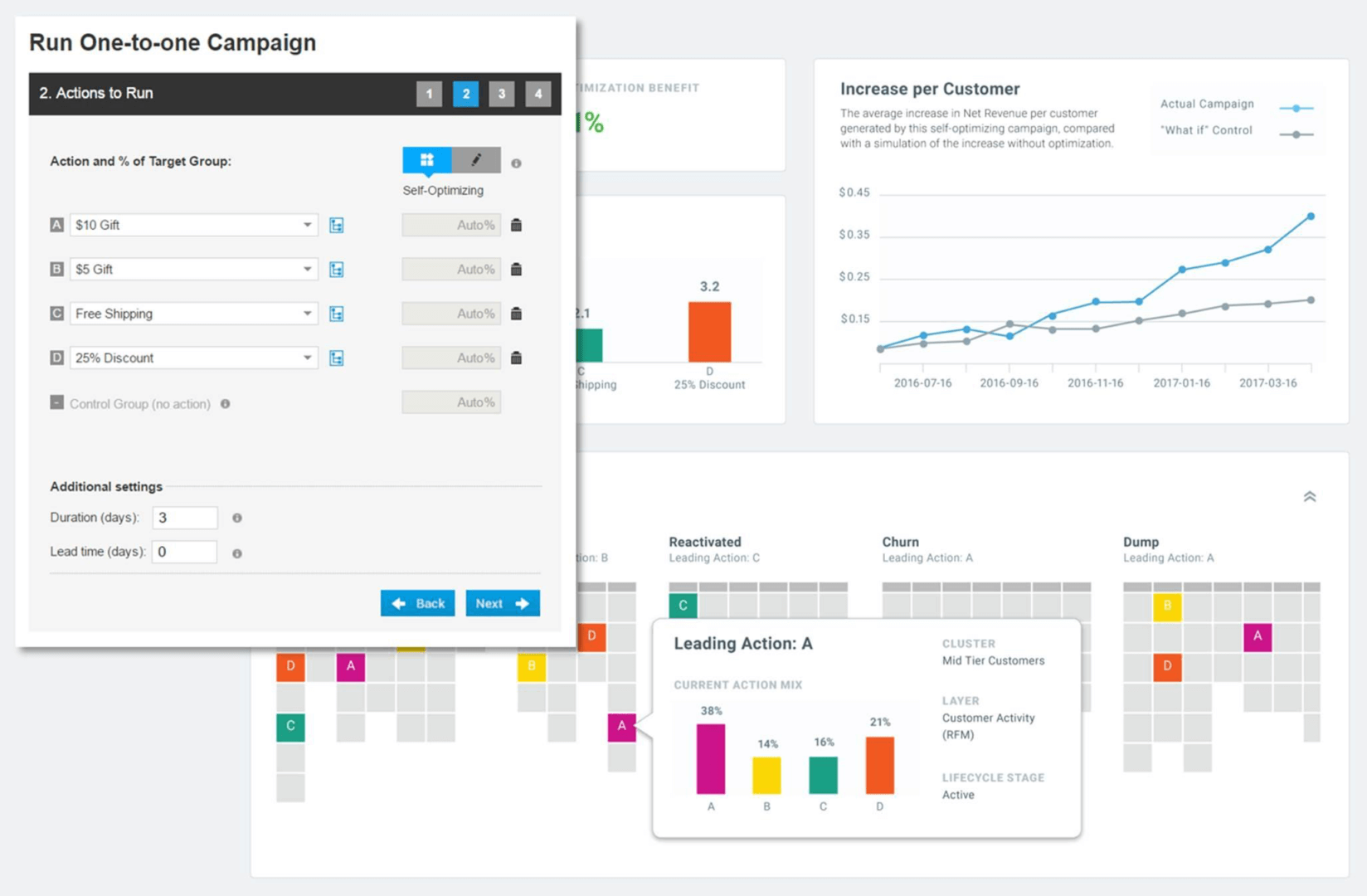Optimove adds an intelligent agent for self-optimizing marketing campaigns
Called Optibot, the new feature makes recommendations, offers insights, and conducts self-optimizing tests across micro-segments.

Marketing optimization at scale, as visualized on Optimove’s website
Micro-segmenting marketing platform Optimove is the latest marketing tool to add an intelligent assistant.
The Israeli company, founded in 2009 and headquartered in New York City, has launched Optibot, which it describes as “the marketing industry’s first CRM [customer relationship management] optimization bot.”
More specifically, it is an intelligent assistant that suggests best practices or possible one-click actions, and fine-tunes testing campaigns that try out and iterate many variations across micro-segments.
The company’s Customer Marketing Cloud is designed to create micro-segments of customers and potential customers and then message to them in multiple channels, including websites, SMS, email, Facebook Custom Audiences, Google’s DoubleClick ad network, push notifications, and in-app messaging. It sends more than four billion personalized messages annually to nearly a billion customers, for such clients as 1-800-Flowers, Zynga, and Lucky Vitamin.
In a typical use case, founder and CEO Pini Yakuel told me, the platform analyzes a client company’s data from their CRM, transaction records, catalogs, and other sources, and divides the anonymous or identified user profiles into selected micro-segments via predictive analytics.
Within a few months of similar sorting, the initial handful of micro-segments is sliced into hundreds of smaller ones, in order to finely tune the messages that are sent to each collection of similar users.
A user might come to the client’s website because of an Optimove-generated Facebook ad targeted toward audiences that are lookalikes of the client’s regular customers, for instance. She might anonymously look at a web page on casual shoes, and then later see a follow-up ad from Optimove on Facebook for those shoes — the same ad that everyone else in her micro-segment of similar attributes and behaviors sees.
The new Optibot is designed to shake things up a bit, addressing what Yakuel told me was a “tension” between data scientists and marketers.
Data scientists, he said, look for data points to support causation or correlation, so a tool can specify that a customer who spends $1000 a year is a high-value customer, for instance, or that a customer who hasn’t visited the web site in a year should be characterized as inactive.
On the other hand, he said, a marketer “is looking for ways to start a conversation” with customers, like sending a “Happy Birthday” message that points out there are still pending loyalty points to redeem.
“The marketer,” Yakuel said, “wants to reach out.”
Optibot helps to bridge that gap, he said, by drawing on data to support suggested actions that can reach out.
It might suggest a best practice by pointing out that the current campaign doesn’t have a control group. Or it might provide a data-derived insight, such as: “In the last two weeks, you had the highest rate ever of migration from inactive to active users.”
Those kinds of machine learning-based insights and suggestions are becoming increasingly common on marketing platforms, from Salesforce’s Einstein layer of artificial intelligence to Adgorithms‘ self-driving platform to YesPath’s Account-Based Marketing platform.
But Yakuel points to Optibot’s ability to run self-optimizing testing campaigns as a differentiator.
For instance, he said, a marketer might decide to set up an A/B test to try out three different kinds of offers in three channels. Usually, he noted, the marketer might test each offer with a 50/50 division in each channel.
But Optibot can try out multiple variations in varying percentages across micro-segments. It can automatically gauge results, rebalance the variables, and then try again until the optimal mix for each micro-segment is achieved.
If only part of a microsegment reacts well, for instance, Optibot can recommend splitting the campaign so that there’s a different mix for the underperforming sub-segment.
Contributing authors are invited to create content for MarTech and are chosen for their expertise and contribution to the search community. Our contributors work under the oversight of the editorial staff and contributions are checked for quality and relevance to our readers. MarTech is owned by Semrush. Contributor was not asked to make any direct or indirect mentions of Semrush. The opinions they express are their own.
Related stories

